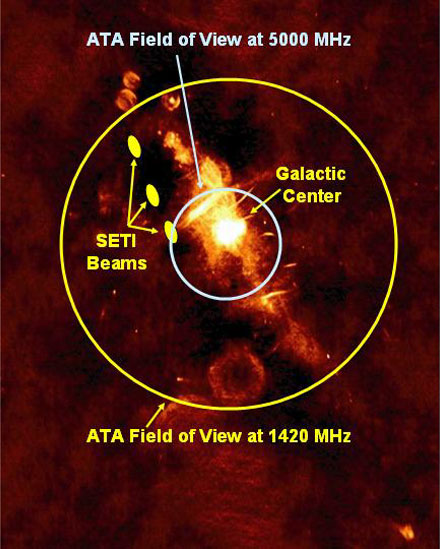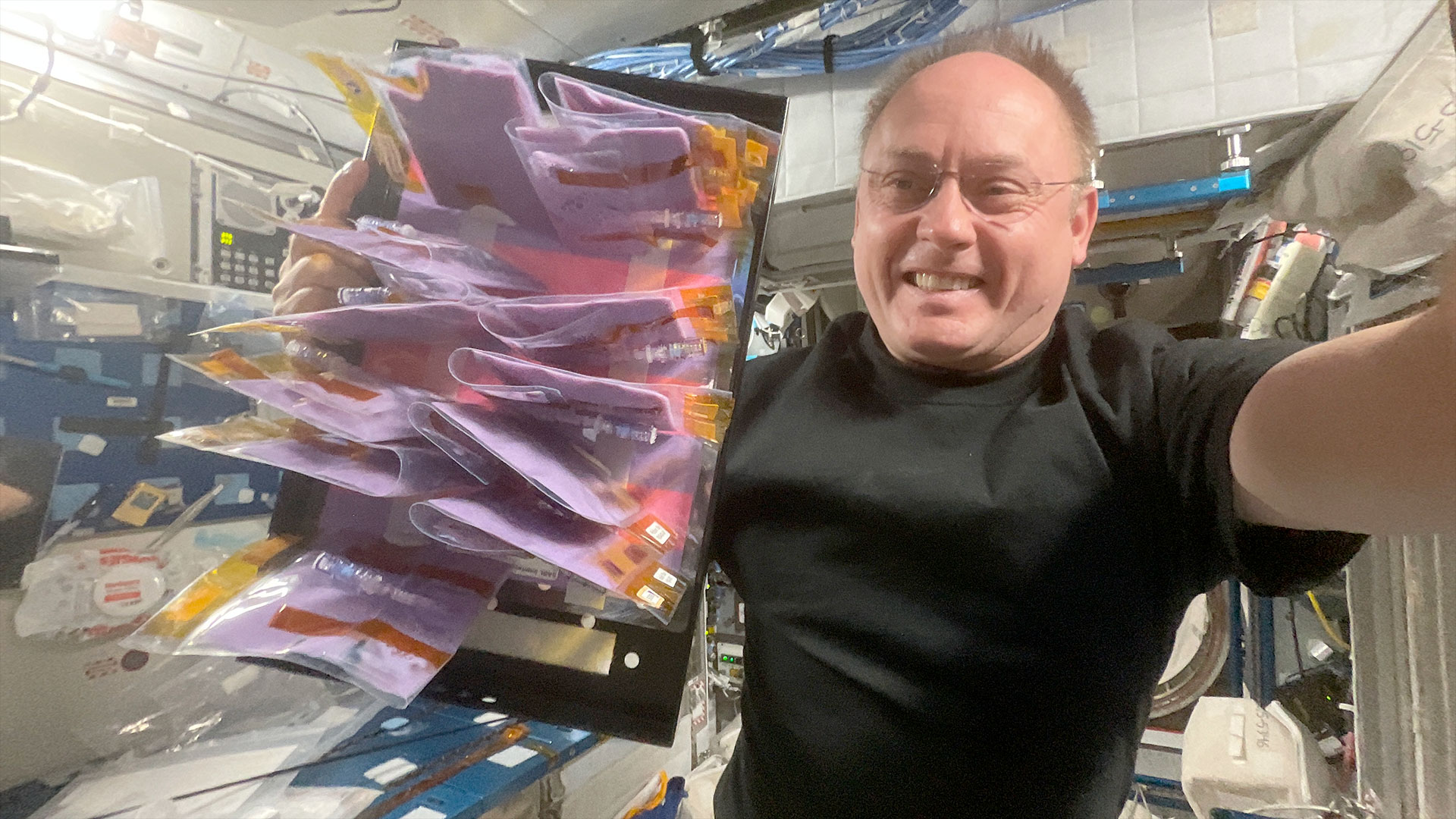Sharing the Allen Telescope Array

Sharing, it's a lesson we learned as children. If you grew up with siblings, your mother probably encouraged you to let them play with your toys. While initially reluctant, you soon realized that if they got to play with your toys, you could then play with theirs. The lesson, sharing could be mutually beneficial, applies to many situations, even when we grow up.
The Allen Telescope Array (ATA) is the first of a new generation of radio telescopes. It is a radical departure from traditional radio telescope design and construction. The completed ATA, with 350 six-meter dishes, will be among the largest fully-steerable telescopes in the world. When the signals from all 350 antennas are combined in one set of processing systems, the array is transformed into sixteen virtual telescopes, each with the sensitivity of a 114-meter diameter antenna and the resolving power of a 900-meter antenna. These virtual telescopes, called beams, can be pointed anywhere in the field of view seen by the six-meter dishes. Another processing system, called a correlator, acts as a "radio camera" that can image that entire field of view. The ATA will have two correlators. It will also be able to operate over a wider range of frequencies than any other telescope in the world, processing four independent frequency bands simultaneously. This gives the ATA the potential for eighteen different projects to use the telescope at the same time, if they can share.
Our long-term goal is to make the most of this potential for simultaneous projects. This will be very challenging because almost every project has special requirements that may conflict with the requirements of other projects. We'll have to learn how to compromise when scheduling simultaneous projects. In the near term, we have a more modest goal: we simply want to gain experience in sharing the telescope, starting with two projects.
Initial observations with the ATA will begin later this year with an array of 42 dishes spread out over an area of roughly 300 by 200 meters. When combined, they will form up to sixteen beams with an angular resolution similar to the Arecibo antenna and with the sensitivity of the NRAO 140 Foot (both antennas were used in Project Phoenix). We'll also have one correlator available. It will process the signals from the dishes to form an image with nearly three thousand pixels. Each pixel will be captured in more than a thousand radio "colors," this radio spectrum shows the amount of radio emission at different frequencies. At a frequency of 1420 MHz, the frequency emitted by hydrogen atoms, the correlator will image a circular area of 2.5 degrees, five times the angular width of the Moon.
The SETI Institute's first project on the ATA will be a SETI survey of a region around the center of our galaxy. We've selected this region because it has the highest density of stars for our search. It also happens to be a very interesting part of the sky for other radio astronomy, so it is a good place to start sharing the telescope. Unlike Project Phoenix, which targeted specific stars, this survey will cover a large area, observing all stars along each line of sight. Using a modified version of the search system developed for Phoenix, we'll use up to three beams at a time.
We're currently discussing options for which positions to point the array in order to give good coverage of the SETI survey area and good coverage for images. At relatively low frequencies like 1420 MHz, there isn't any problem for shared use of the ATA. As seen in Figure 1, the field of view is large. The simplest approach for SETI is to keep the array pointed at one spot on the sky for a period of several hours and move the beams. This will allow the correlator to take a long exposure image of the field of view. However, it would be scientifically useful to image this part of the galaxy at higher frequencies. Figure 1 shows the smaller field of view at 5000 MHz. In order to cover the same area as at 1420 MHz, the antennas will have to be repositions. This complicates the scheduling of the SETI observations, but it also provides a lesson for future work with more projects sharing the ATA.
Breaking space news, the latest updates on rocket launches, skywatching events and more!
Join our Space Forums to keep talking space on the latest missions, night sky and more! And if you have a news tip, correction or comment, let us know at: community@space.com.
